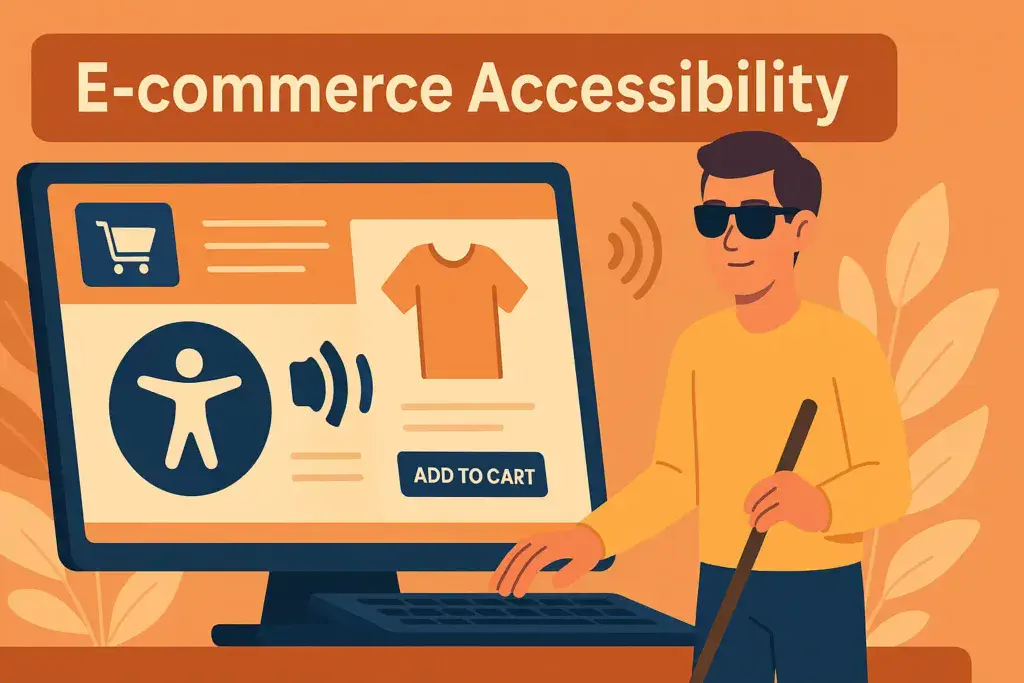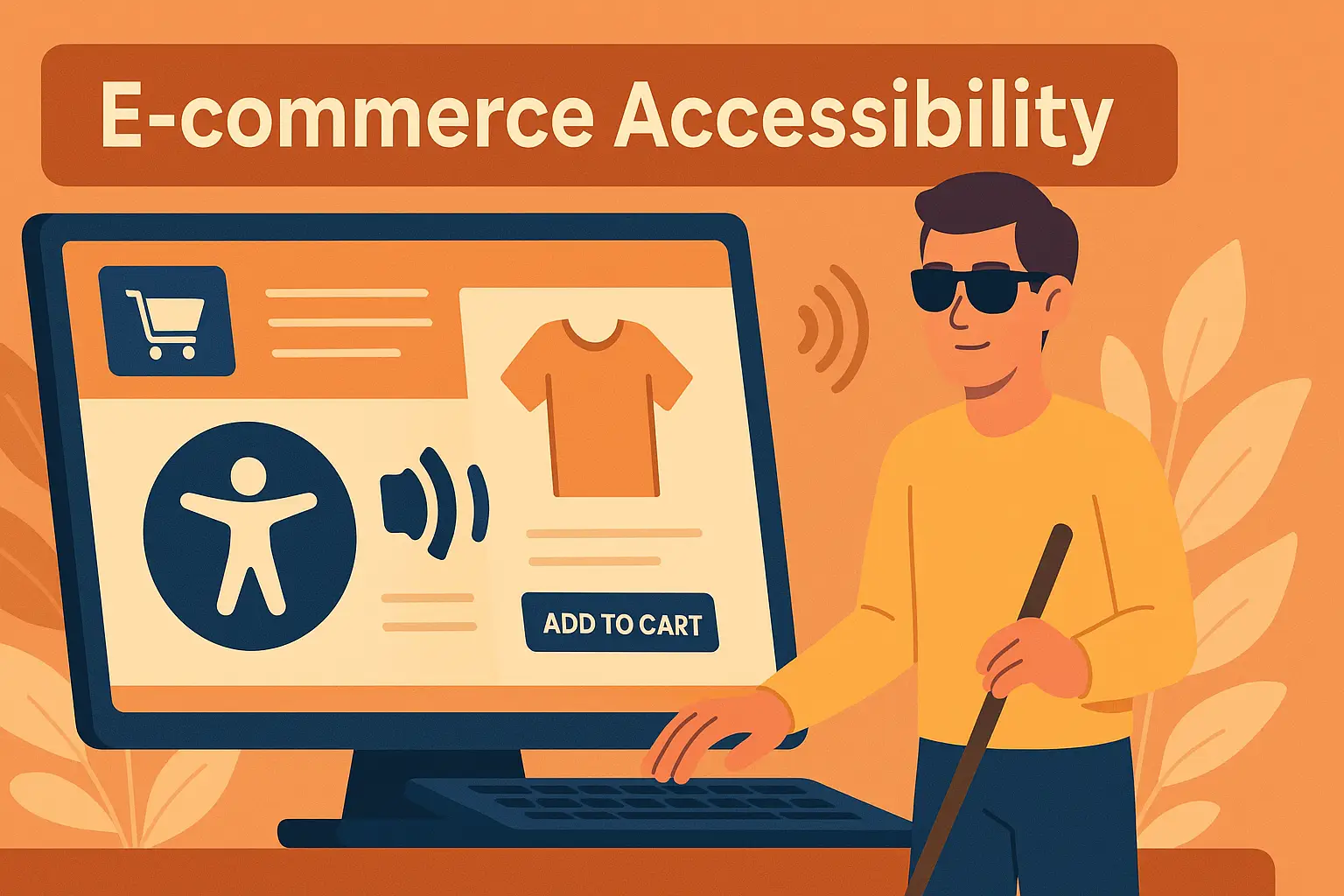
I. Introduction to E-commerce Accessibility
In today’s digital landscape, e-commerce has become an integral part of how consumers shop and engage with brands. However, as the online marketplace continues to expand, it is crucial to ensure that these platforms are accessible to all users, including those with disabilities.
A. Importance of Accessibility in E-commerce
Accessibility is not just a legal obligation; it is a fundamental aspect of user experience that can significantly influence customer satisfaction and loyalty. By making e-commerce websites accessible, companies can reach a broader audience, improve their reputation, and foster an inclusive shopping environment.
B. Overview of Legal Requirements
In many jurisdictions, there are legal requirements mandating accessibility standards for websites, including the Americans with Disabilities Act (ADA) in the United States and the Equality Act in the United Kingdom. These regulations are designed to ensure that individuals with disabilities have equal access to goods and services provided online. Failure to comply with these laws can result in legal consequences and damage to a brand’s reputation.
C. Benefits of Accessible Websites
Beyond compliance, the benefits of creating an accessible e-commerce website are manifold. Accessible design can lead to improved search engine optimization (SEO), as search engines favor websites that provide a better user experience. Furthermore, accessible websites often see increased conversion rates, as they cater to a wider range of users, including those with varying abilities and preferences. By prioritizing accessibility, e-commerce businesses not only fulfill their ethical and legal responsibilities but also enhance their overall performance and customer engagement.
In the following sections, we will delve deeper into the specific guidelines and practical tips for enhancing accessibility in e-commerce websites, ensuring that all users can enjoy a seamless online shopping experience.
II. Guidelines for E-commerce Website Accessibility
Creating an accessible e-commerce website is essential for ensuring that all users, regardless of their abilities or disabilities, can navigate and interact with the site effectively. The following guidelines provide a framework for improving accessibility in your e-commerce platform.
A. Adhering to WCAG Standards
1. Understanding WCAG Principles
The Web Content Accessibility Guidelines (WCAG) offer a comprehensive set of recommendations aimed at making web content more accessible. These guidelines are built around four core principles: Perceivable, Operable, Understandable, and Robust (POUR). Each principle addresses specific aspects of accessibility. For instance, content must be perceivable to all users, meaning it should be presented in ways that can be easily seen or heard. Websites must also be operable, allowing users to navigate with various devices and methods. By adhering to these principles, e-commerce businesses can create an inclusive online shopping experience.
2. Applying Guidelines to Design
When implementing WCAG standards in your e-commerce design, consider aspects such as color contrast, text size, and responsive layouts. Ensure that text is easily readable, using high-contrast colors that are friendly to users with visual impairments. Additionally, consider mobile users by designing responsive interfaces that adapt seamlessly to different screen sizes. This approach not only benefits users with disabilities but also enhances the overall user experience.
3. Testing for Compliance
Regular testing is crucial for maintaining compliance with WCAG standards. Employ automated accessibility testing tools to identify immediate issues, but complement these tools with manual testing. This can involve real users interacting with your site, particularly those with disabilities. Their feedback will provide valuable insights into areas needing improvement and help ensure that your site meets accessibility standards effectively.
B. Designing for Keyboard Navigation
1. Creating a Logical Tab Order
Keyboard navigation is a critical aspect of accessibility for users who cannot use a mouse. Ensure that your website’s focus order is logical and intuitive. This means that when users press the Tab key, they should move through interactive elements in a sequence that reflects the visual layout of the site. A well-structured tab order enhances navigation and allows users to access all functionalities without needing a mouse.
2. Ensuring Focus Indicators are Visible
Visible focus indicators are essential for users navigating with a keyboard. Implement clear styles for focus states, such as outlines or background changes, to show which element is currently selected. This visual feedback helps users keep track of their navigation path, minimizing confusion and improving overall usability.
3. Providing Skip Navigation Links
To facilitate a smoother user experience, include skip navigation links at the top of your pages. These links allow users to bypass repetitive content, such as menus or headers, and jump straight to the main content. This feature is particularly beneficial for users using assistive technologies and can significantly enhance their browsing efficiency.
C. Optimizing for Screen Readers
1. Using Proper HTML Semantics
Semantic HTML is crucial for creating accessible e-commerce websites. Use appropriate HTML elements to convey the structure and meaning of your content. For example, utilize headings (H1, H2, etc.) for organizational purposes and lists (UL, OL) for grouped items. This semantic structure helps screen readers interpret the content correctly, allowing users to navigate your site more effectively.
2. Providing Alternative Text for Images
Images play a significant role in e-commerce, but they must be accessible to all users. Always provide descriptive alternative text (alt text) for images, especially product images. This text should convey the essential information and context of the image, allowing users who rely on screen readers to understand what is being displayed.
3. Labeling Form Elements Correctly
Forms are common on e-commerce sites, and proper labeling is crucial for accessibility. Ensure that all form fields are clearly labeled, using the `<label>` element associated with its respective input. Additionally, provide error messages and guidance to assist users in completing forms. This practice not only aids users with disabilities but also enhances the experience for all users by reducing confusion.
By following these guidelines, e-commerce businesses can create more accessible websites that cater to a diverse range of users. Improving accessibility not only benefits customers with disabilities but also fosters a more inclusive and positive shopping experience for everyone.
III. Tips for Improving E-commerce Accessibility
Creating an accessible e-commerce website is an ongoing process that benefits significantly from user input and continuous improvement. Below are some practical tips to enhance accessibility and ensure that your online store is welcoming to all users.
A. Conducting User Testing with Diverse Groups
One of the most effective ways to identify accessibility barriers is to conduct user testing with a diverse group of individuals, including those with disabilities. This could involve:
– **Recruiting Participants**: Aim to include users who utilize various assistive technologies, such as screen readers, magnifiers, or alternative input devices. This will provide insights into how different user groups interact with your site.
– **Observation Sessions**: Arrange sessions where participants navigate your website while thinking aloud. This will help you understand their thought processes and the difficulties they encounter, allowing you to pinpoint areas that need improvement.
– **Feedback Collection**: After the testing, gather feedback through surveys or interviews. Ask participants to share their experiences, frustrations, and suggestions for enhancing usability.
By incorporating real user experiences into the design and development process, you can make informed decisions that significantly improve accessibility.
B. Implementing Feedback Loops
Establishing effective feedback loops is essential for ongoing accessibility improvements. Consider the following strategies:
– **Regular Surveys**: Conduct periodic surveys asking customers about their experience with your website’s accessibility features. This can help you stay updated on user needs and identify areas that require attention.
– **Customer Support Insights**: Encourage your customer support team to document accessibility-related inquiries or complaints. Analyzing these interactions can reveal common obstacles faced by users and inform necessary changes.
– **Community Engagement**: Create online forums or social media groups where users can share their experiences and suggestions. Engaging with the community can foster a sense of inclusivity and provide valuable insights.
By actively seeking feedback and making adjustments based on user input, you can create a more accessible and user-friendly e-commerce experience.
C. Utilizing Accessibility Tools and Resources
There are numerous tools and resources available to help improve the accessibility of your e-commerce website. Here are some recommended approaches:
– **Automated Accessibility Testing Tools**: Use tools like Axe, Wave, or Lighthouse to perform initial scans of your website. While these tools can identify many common accessibility issues, they should be complemented by manual testing, as automated tools may miss contextual nuances.
– **Accessibility Checklists**: Reference comprehensive accessibility checklists based on WCAG guidelines to ensure you are covering critical aspects of design and functionality. These checklists can serve as a roadmap for your development team.
– **Training and Workshops**: Invest in training sessions for your design and development teams on accessibility best practices. Keeping your team informed about the latest trends and techniques will ensure accessibility remains a priority throughout the website’s lifecycle.
By leveraging the right tools and resources, you can streamline the process of enhancing your e-commerce site’s accessibility and create a more inclusive shopping experience for all users.
In summary, improving e-commerce accessibility requires a commitment to user engagement, ongoing feedback, and utilizing available resources. By prioritizing these efforts, you can create a more equitable online shopping environment that caters to diverse needs and enhances overall customer satisfaction.
IV. Conclusion and Future Directions
As we navigate the digital landscape of e-commerce, it is imperative to prioritize accessibility as a fundamental aspect of website design and development. The insights shared in this article underscore the importance of creating an inclusive shopping experience for all users, regardless of their abilities. By adhering to established guidelines, such as the Web Content Accessibility Guidelines (WCAG), and implementing practical strategies for keyboard navigation and screen reader optimization, e-commerce websites can significantly enhance their usability for diverse audiences.
In summary, accessible e-commerce websites not only comply with legal requirements but also unlock a multitude of benefits, including increased customer satisfaction, broader market reach, and improved brand reputation. As the digital marketplace continues to evolve, the demand for accessibility will only grow stronger, making it essential for businesses to remain proactive in their efforts.
Looking ahead, the future of accessibility in e-commerce holds exciting possibilities. Emerging technologies, such as artificial intelligence and machine learning, are paving the way for more intuitive and personalized shopping experiences. These advancements can further enhance accessibility features, allowing for greater customization based on individual user needs. Additionally, as more consumers advocate for inclusive practices, businesses that prioritize accessibility will likely gain a competitive edge in the marketplace.
To stay ahead of the curve, it is crucial for e-commerce businesses to commit to ongoing improvements in accessibility. This includes regularly updating their websites based on user feedback, keeping abreast of evolving standards and technologies, and fostering a culture of inclusivity within their teams. By doing so, they not only ensure compliance but also create a welcoming environment that invites all users to explore and engage with their offerings.
In conclusion, as we reflect on the key points discussed, we encourage e-commerce entities to view accessibility not as a checkbox to be ticked but as a vital component of their digital strategy. By embracing this mindset, companies can build a more inclusive, equitable, and successful online shopping experience for everyone.


